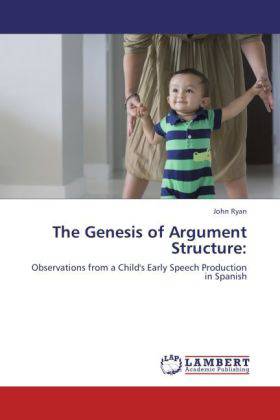
- Afhalen na 1 uur in een winkel met voorraad
- Gratis thuislevering in België vanaf € 30
- Ruim aanbod met 7 miljoen producten
- Afhalen na 1 uur in een winkel met voorraad
- Gratis thuislevering in België vanaf € 30
- Ruim aanbod met 7 miljoen producten
Zoeken
The Genesis of Argument Structure:
Observations from a Child's Early Speech Production in Spanish
John Ryan
Paperback | Engels
€ 86,45
+ 172 punten
Omschrijving
The Genesis of Argument Structure follows the acquisition of argument structure and the verb phrase from the earliest stages of language production of one monolingual child learning Peninsular Spanish. Utilizing longitudinal data from the Irene corpus of the Child Language Data Exchange System (CHILDES), specific attention is paid to three areas of emergence: 1) argument-specific verb types, such as unaccusatives, unergatives, and transitives; 2) various morphological forms of the verb produced by the child, particularly tensed and non-tensed forms such as imperatives and infinitive expressions; and 3) the position of overt arguments. The data of this study suggest that arguments may be acquired in the order of Theme, Agent, and Experiencer. Earliest verb types produced were Theme-oriented. These were followed by Agent-only structures with no overt arguments. Also important is the early correlation found between morphological form and degree of agentivity of the verb, where verbs with Agent subjects exclusively appeared in the imperative and Theme-oriented verbs appeared primarily as tensed forms. When overt arguments did start to appear they did so postverbally.
Specificaties
Betrokkenen
- Auteur(s):
- Uitgeverij:
Inhoud
- Aantal bladzijden:
- 180
- Taal:
- Engels
Eigenschappen
- Productcode (EAN):
- 9783847338086
- Verschijningsdatum:
- 6/01/2012
- Uitvoering:
- Paperback
- Afmetingen:
- 152 mm x 229 mm
- Gewicht:
- 272 g

Alleen bij Standaard Boekhandel
+ 172 punten op je klantenkaart van Standaard Boekhandel
Beoordelingen
We publiceren alleen reviews die voldoen aan de voorwaarden voor reviews. Bekijk onze voorwaarden voor reviews.








